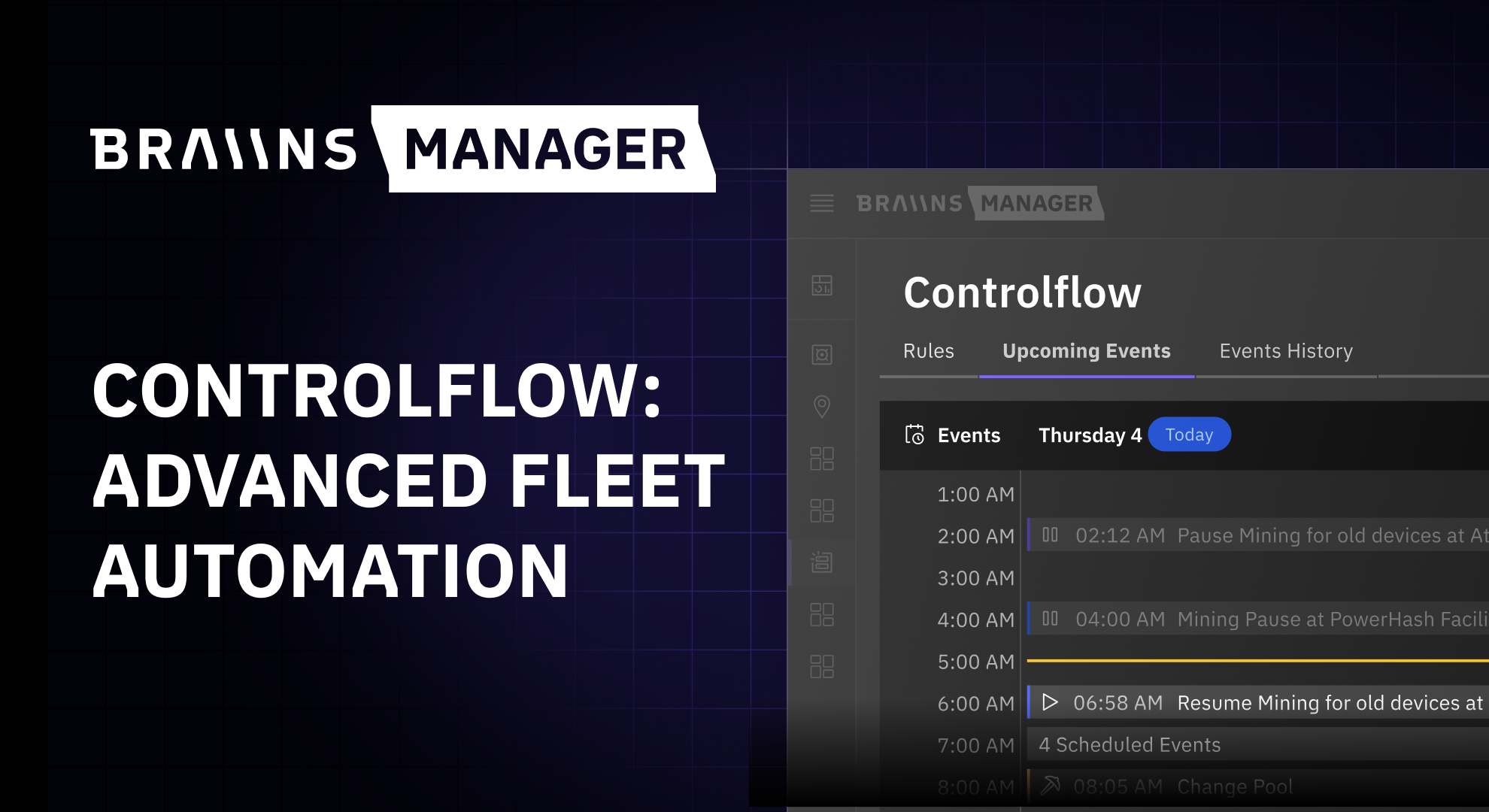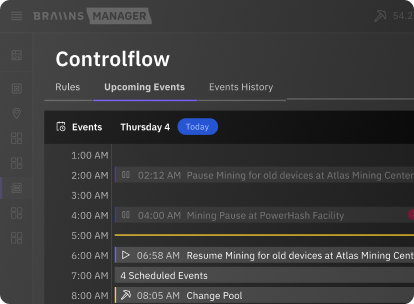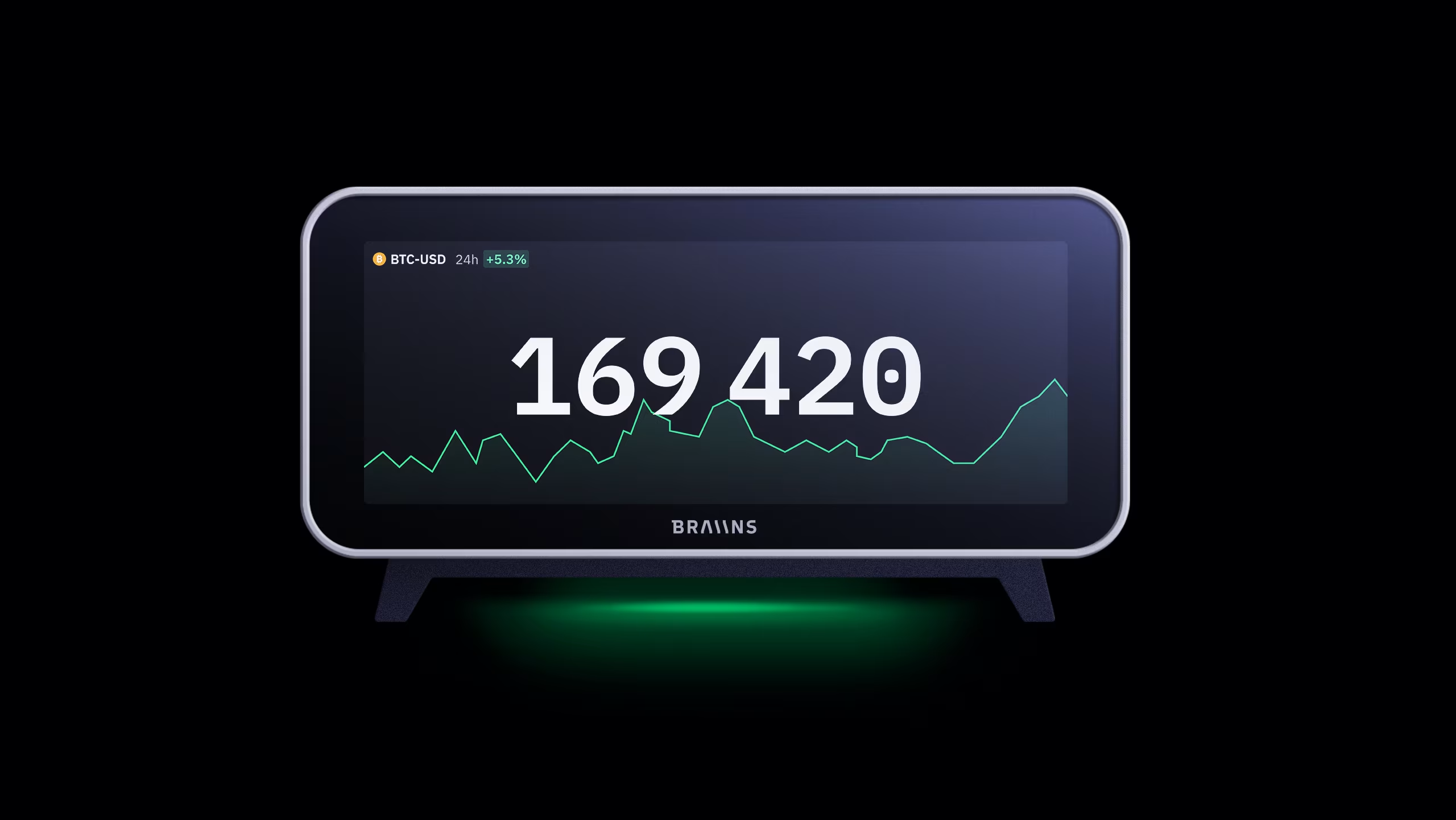Bitcoin Mining Control Board Variations Explained
Published
2.5.2022
Describing the differences between Antminer and Whatsminer control board variants and developing firmware for each of them.

Table of Contents
While the Braiins OS development team is hard at work adding support for Whatsminers and different control board variations of the Antminer S19 models, we’re hearing the questions (and frankly the frustrations) of many miners who would like us to release this support yesterday.
Unfortunately, there’s nothing that we (the Braiins marketing and support teams) can do to speed up the process. And there’s also only so many soon TM stickers we can post. So, in this article, we’ll do the best thing we can: explain to you what our engineering team has explained to us about what these different control board variations are and why the development process is so time consuming.
Differences Between Control Board Variations on Antminer S19 Models
There are currently 3 variations of control boards that may come with your Antminer S19 devices:
- Zynq (C55 and C71): these were the control boards on all of the earliest batches of S19 models but not used at all in more recent batches; they have an SD card slot accessible without opening the cover.


- BeagleBone Black (BBB): started replacing Zynq boards on batches in late 2021 for Antminer S19j and S19j Pro’s; has an SD card slot but it is not accessible without opening cover

- Amlogic: increasingly common with the latest batches of Antminer S19j and S19j Pro’s; does not have an SD card slot, only a microUSB


For firmware development, the biggest difference between these control boards is the system-on-a-chip (SoC) being used. A SoC is a microchip that integrates the CPU components and peripherals of an electronic device. In less engineering-y terms, the SoC is critical for telling the ASIC chips (that do the actual hashing) what to do.
In the case of the Zynq control boards, they use a Xilinx SoC which has been consistent across multiple generations of Bitmain hardware. That’s why, if you have an S17 models control board, you can swap it into an S19 model device and it will work well with Braiins OS on the S19 models. The SoC and connector pinouts are the same between these S17 models and S19 models Zynq control boards, so Braiins OS can auto-detect which hardware model it is and run the corresponding firmware version.
During the latter half of 2021, it seems that Bitmain ran out of the supply of these Xilinx chips and had to change to a modified BeagleBone Black (BBB) design where the main SoC is an AM335x Sitara. Shortly after, they introduced a third control board variant called Amlogic in which the SoC is an Amlogic A113D. Readers may be interested to know that these Amlogic A133D chips are primarily meant for audio processing, e.g. in smart speakers such as Amazon Alexa.
There is one thing in common between all 3 of these control board variations, however. Each has Secure Boot enabled, making it more difficult to install custom firwares and to access the machines via SSH. Our only comment on this: not your firmware, not your miner.
When Whatsminer / BBB / Amlogic?
We’ve had support for Antminer S19, S19 Pro, T19, S19j, and S19j Pro with Zynq control boards for a while, and we’ve since turned our attention to supporting the BBB’s. The reason BeagleBone support is taking multiple months is that the firmware itself is much different compared to the version that runs on Zynq boards.
In the case of the Zynq control boards, the firmware has an FPGA component that handles the real-time streaming of data to and from the ASIC hashing chips. The SoC’s on the BBB and Amlogic boards do not have this FPGA component, and so the firmware itself is significantly different for these control board variations. As a result, getting a full feature match and up-to-par autotuning performance for BBB’s and Amlogic is almost like supporting new hardware models altogether, and it takes time.
The case for Whatsminers is actually pretty similar. We have had Braiins OS running on the Whatsminer M20S for a while now. However, MicroBT also uses 3 different types of SoC’s on their control boards with a seemingly arbitrary distribution. The 3 variations on Whatsminer M20S devices are H3, H6, and H6OS. In order to release Braiins OS to the public, we need to ensure that it runs smoothly on each of these variations, which requires developing different versions of the firmware.
If it’s any consolation, this frustrates us as much as anybody. But the answer to wen whatsminer and wen BBB / amlogic is…

Illegal Firmware (GPL Violations)
One of the best things that could happen for bitcoin miners and the bitcoin network itself would be widespread GPL-compliance (General Public License) by hardware manufacturers and firmware developers with their forks of CGminer. This would greatly improve transparency and decrease the trust that miners must place in hardware manufacturers and firmware developers, while also spurring greater competition in the space—all of which is good for the end customers, miners.
For those who don’t know, CGminer was originally published as fully open-source software under a GPL which requires anybody who modifies the code to publish their sources publicly. Modified versions of CGminer are still being used prevalently throughout the bitcoin mining industry to this day, with the only exception being Braiins OS which is based on BOSminer, the mining software we wrote from scratch in Rust and published in 2020.
This means that the majority of mining machines and the miners running non-compliant firmware on them are in violation of the CGminer GPL and subject to lawsuits. It’s a black mark on the mining industry and one that will only fade away if miners—the purchasers of mining hardware and users of firmware—demand it.
Not your firmware, not your miner.
Categories
Be the first to know!
Read Privacy Policy.
Most Recent Articles
.png)
The Best Bitcoin Conferences & Events of 2026
29.12.2025

Introducing Controlflow: Advanced Automation in Braiins Manager
9.12.2025



